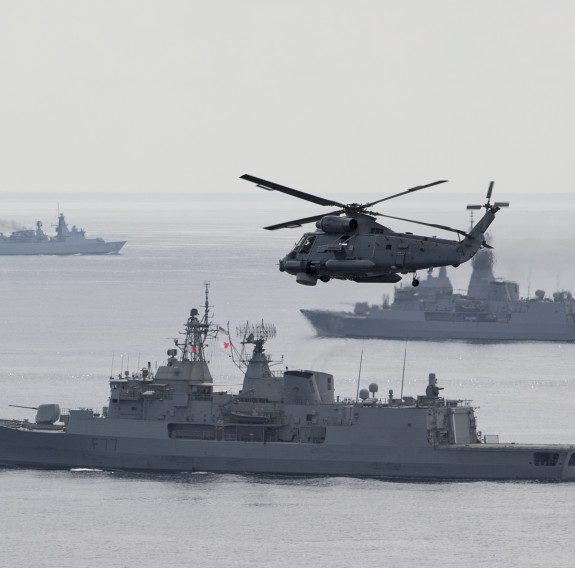FPDA
Security of our region
The Five Power Defence Arrangements (FPDA) between the United Kingdom, Australia, New Zealand, Malaysia and Singapore are one of the longest-running defence arrangements in the world. Conducting regular military exercises between the military forces of the five countries since 1981 enhances interoperability and promotes stability and security in the Southeast Asian region.
1971
Five nations commit to defend and protect the newly formed states of Singapore and Malaysia whilst they build their defence capability. Following the reduction of forces in Southeast Asia from the United Kingdom, the FPDA are established and agree that in the event of any form of threat of armed attack the member countries will “immediately consult together for the purpose of deciding what measures should be taken jointly or separately.”
1981
Although not a formal alliance, the FPDA evolve to include a multilateral training exercise program with all five countries regularly coming together to conduct complex exercises involving air, maritime and land forces. These tactical and operational training activities enhance military interoperability between the five nations becoming the only defence arrangements of their kind in Southeast Asia.
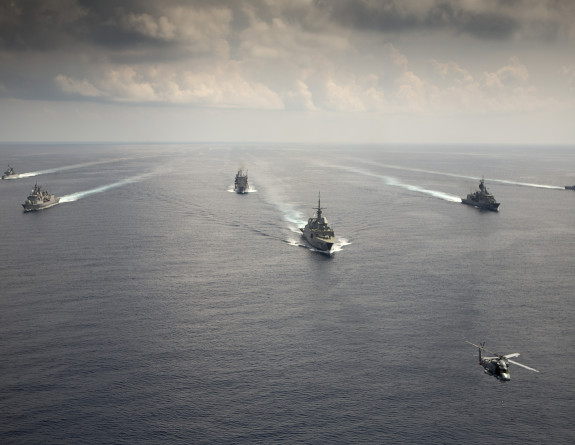
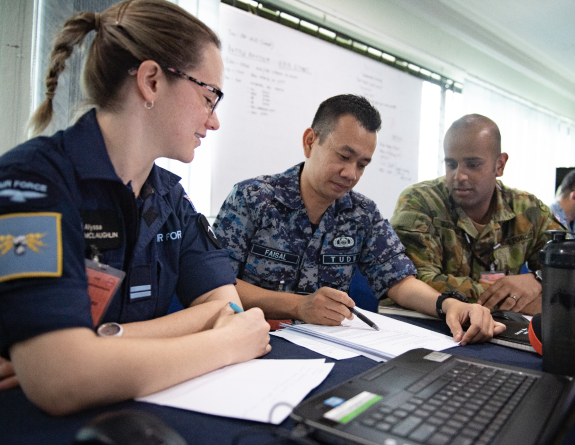
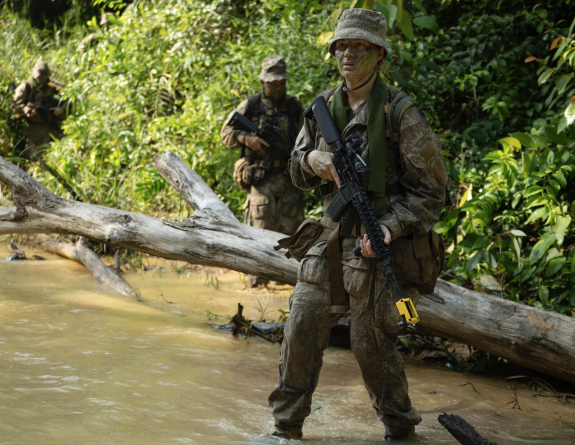
2004
Responding to changing global threats, the first FPDA Exercise Bersama Lima (translates to "Together Five" in Malay) commences. This is a new large-scale military training exercise executing multi-threat scenarios from counter-terrorism and maritime security to humanitarian assistance and disaster relief tasks around the region. The combined joint exercise involves 3,500 military personnel, 31 ships, 60 aircraft, and two submarines operating from the Command and Control facility at Paya Lebar Air Base in Singapore.
2013
Almost every year the NZDF deploy a contingent to Exercise Bersama Lima, participating in tactical training scenarios alongside other FPDA nations using air, land, and maritime assets. In the air, the Royal New Zealand Air Force No. 5 Squadron deploy a P-3K2 to RMAF Base Butterworth, at Penang in Malaysia, for Exercise Bersama Lima 13. The squadron participates in a warfare scenario involving two phases, Force Integration Training (FIT phase) and the War Exercise (WAREX).
Anti-Surface Warfare (ASuW) is carried out—working first in support of friendly naval forces, then switching sides to work for the opposing forces (OPFOR). They conduct Anti-Submarine Warfare (ASW) exercises using an Expendable Mobile Acoustic Training Target (EMATT). The P-3K2 conducts surveillance, as a maritime patrol aircraft, providing surface pictures of enemy forces to friendly ships, and in the ASW role, to find the submarine that is in the area. During the WAREX the role of the P-3K2 changes as tensions escalate. As a surveillance platform they guide fighter aircraft to the enemy vessels, or seek to detect, deter or destroy the ‘enemy’ submarine. No.5 Squadron develop and hone their procedures for the P-3K2 as well as connecting with military friends in Southeast Asia.
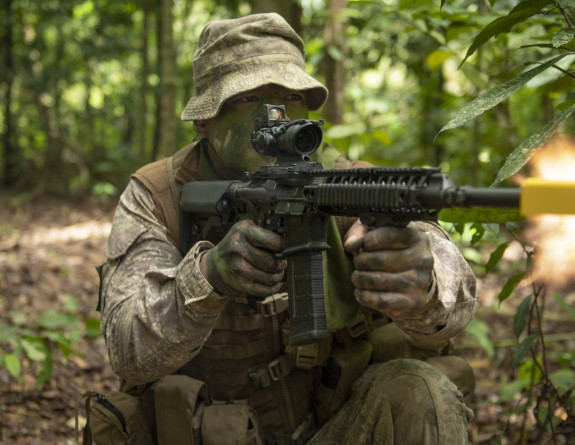
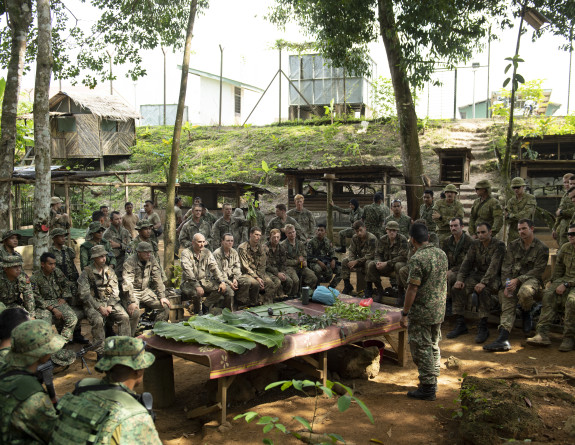
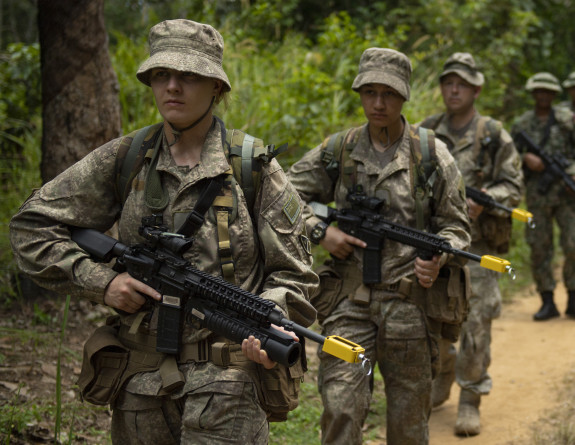
2019 Exercise Bersama Lima
2019
On the ground, more than 50 New Zealand Army reservists undergo tactical and survival training at the Royal Malaysian Air Force Base in Kuantan with Royal Marine Commandos before heading into the Malaysian jungle for Exercise Bersama Lima 19. The infantry platoon conducts sea movement exercises on a Singaporean transport ship, platoon level fighting patrols, participates in an infantry company attack, and plans and conducts a non-combatant evacuation task.
At sea, the Royal New Zealand Navy contributes to the battle staff that command Maritime Task Group 657.1 on the eastern seaboard of Malaysia. The team plans and executes a two-week sea phase to mould ships KD Lekiu and Kasturi from Malaysia, RSS Persistence, Valour, and Vigour from Singapore, and HMAS Sirius from Australia, into an effective task group.
The Maritime Task Group proceeds to Kuantan where, as they plan, a multitude of fast jets and aircraft touch down, ready to go to battle. The task group gets used to operating with other militaries, and the battle staff embark on RSS Persistence to direct the Combat Essential Training/ Force Integration Training (CET/FIT) phase of the exercise.
It was really cool to be involved in such a dynamic exercise where the assets that we rarely get to play with were available in abundance
Lieutenant Trent Nancekivell, HMNZS Te Kaha
After anchoring at Tioman Island, the staff debrief and move into the War Exercise (WAREX) phase. With the assets split into opposing red and blue forces, both sides are tasked with winning the fight over the other.
The multi-national military exercise goes for 17 days with the five nations developing their joint naval, air and ground force interoperability.
2021
HMNZS Te Kaha and HMNZS Aotearoa are deployed to attend Exercise Bersama Gold 2021 in October. These exercises build friendships, share cultures, enhance interoperability, and continue to hone our warfare techniques. 2021 marks the 50th anniversary of the FPDA - a unique and enduring multinational defence engagement maintaining peace and security in the Southeast Asia region.
